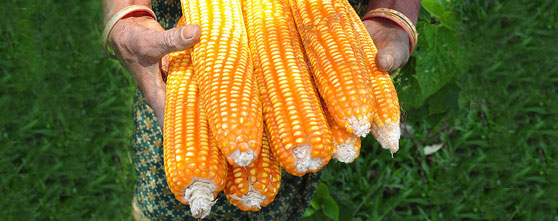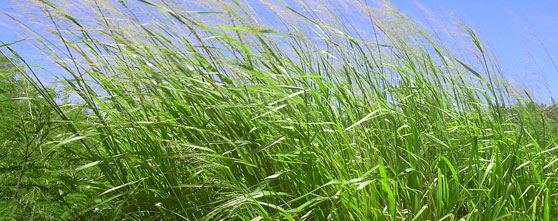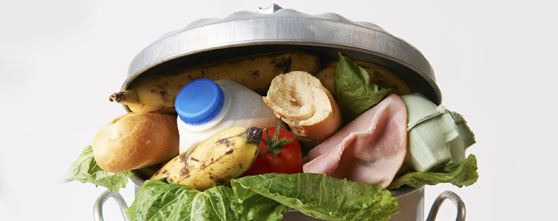Biotech Bytes
Does GM insect-resistant maize really benefit South African smallholders?

Image by Wikimedia Commons.
Genetically modified (GM) Bt maize that is resistant to insect pest damage has long been touted as a potential saviour for South African smallholders. But in a commentary published in the South African Journal of Science, researchers argue that money and effort would be better directed at alternative, cheaper solutions. Their reasoning is as follows:
Bt maize, which produces insecticidal proteins that kill insect pests such as the African stem borer, was introduced to South African smallholders in 2001. Apart from increasing yields through reducing stem-borer damage, Bt maize reportedly contains fewer cancer-causing agents produced by fungi that colonise insect-damaged maize stems.
While these benefits are considerable when stem-borer numbers are high, in the absence of insect damage Bt maize plants can yield less than non-GM counterparts that are better adapted to poor South African soils. High seed prices and regulations prohibiting farmers from saving and replanting Bt-maize seed add to the economic burden placed on smallholders growing this crop.
According to the commentary, less costly, open-pollinated varieties bred specifically for local conditions and whose seed may be recycled would better serve the smallholder farming community.
Read the original peer-reviewed article
_____________________
African fodder plant found to decontaminate toxic soil

Image by Forest and Kim Starr.
A humble grass that can clean up soils contaminated with toxic heavy metals may be an environmental saviour, say scientists from the Cape Peninsula University of Technology (CPUT).
Guinea grass is a perennial African-indigenous grass suited to a variety of habitats, from rain forests to savannahs. Ordinarily a fodder plant, scientists are investigating whether guinea grass can absorb contaminants from the soil at toxic waste sites such as metal mines. This process, known as phytoremediation, is often carried out using plants that are not native to sub-Saharan Africa, like wild mustard.
To find an African-indigenous equivalent, researchers tested guinea grass on two farms at the University of Agriculture in Nigeria. Plants grown in soil containing various concentrations of lead, chromium and cadmium absorbed small amounts into their roots, stems and leaves. As the metals accumulated in the plants’ tissues, metal levels in the soil correspondingly decreased.
Although grass growth remained unaffected, metal-absorption at high concentrations was toxic, “burning” the leaves and turning them yellow. The researchers thus concluded that Guinea grass is best suited for phytoremediation of metals on moderately contaminated, fertile soil.
Read the original peer-reviewed article
_____________________
Garbage to power student residences in winter

Image by U.S. Department of Agriculture.
Food and garden waste from the University of Johannesburg’s Doornfontein Campus (UJ DFC) may in future be converted into energy by microbes in order to power student residences and campus buildings.
This will help address the global problem of increasing waste from human activities while available landfill areas for waste disposal are decreasing. The organic component of such waste is also a renewable energy source, producing the eco-friendly alternative fuel that is biogas, or bio-methane.
Chemical engineers from UJ DFC wanted to see how much bio-methane they could obtain from waste produced by the campus cafeteria and student residences. They found that of the 378 kg of waste produced daily, 61% constituted the organic fraction made up of food and garden waste.
Digestion of this organic fraction by bacteria in batch digesters generated biogas with a methane content of 62%. The researchers concluded that biogas generated from campus organic waste could produce an estimated 142.6 kWh of energy per day, enough to heat students’ residences during winter.
Read the original peer-reviewed article
_____________________
Structuring food for obesity prevention

Image by Pixabay.
Food scientists at the University of Pretoria (UP) are developing novel approaches to reduce causes of obesity and related conditions like diabetes and cardiovascular diseases.
Flour-based cereal foods like cakes and pastries are widely accepted as contributing to the worldwide rise in obesity and associated type 2 diabetes. This is due to the processed cereals’ starchy carbohydrates being rapidly digested into glucose, which is absorbed in the upper section of the small intestine. A corresponding spike in blood glucose causes the release of insulin, which stimulates glucose transport into cells.
One way to prevent flooding the bloodstream with glucose is to make starch less-easily digestible. This can be achieved physically through protecting the starch within the cereal grain (whole-grain foods including seed coats), making it less accessible to digestive enzymes.
Alternatively, foods can be made less digestible by adding high levels of soluble fibre, or the starch constituent amylose, the tightly packed structure of which makes it difficult to break down.
Professor Emmambux and colleagues at UP are using this information to develop flours and sugars that take longer to digest, thus limiting the glucose spike associated with eating processed carbohydrates
Read the original peer-reviewed article
_____________________
SAASTA’s Young Science Communicator’s Competition Winners announced

Image by SAASTA.
SAASTA would like to congratulate the winners of the Young Science Communicators’ Competition 2014/2015. After a thorough process of judging, the following places have been awarded:
Newspaper/Magazine Article:
Winner: Alexander Venter with “Food for Thought: What’s at Steak?”
Runner Up: Petrie Jansen Van Vuuren with “Awakening Damaged Brains…with a Sleeping Pill!”
Radio Script:
Winner: Moleseng Moshobane with “The Creepiest Creatures”
Runner Up: Sune Von Solms with “Radio Advert Cyber Safety”
Viral Video:
Winner: Elizna Maasdorp with “Randomised Controlled Trials”
Runner Up: Michelle Low with “What is this buzz word sustainability?”
Open Category:
Winner: Ikenna Mbakwe with “What the Chameleon Said.”
Runner up: Sune Von Solms with “Collection of Cyber Safety Posters”
Special Prize for 2014 International Year of Crystallography was jointly awarded to:
Kgothatso Molefe for her article “Can Diamonds Cure HIV? Discovering the link” and Gustav Krantz for his open category entry “Crystallography from the Ground up”
Well done to all the winners.
|
|